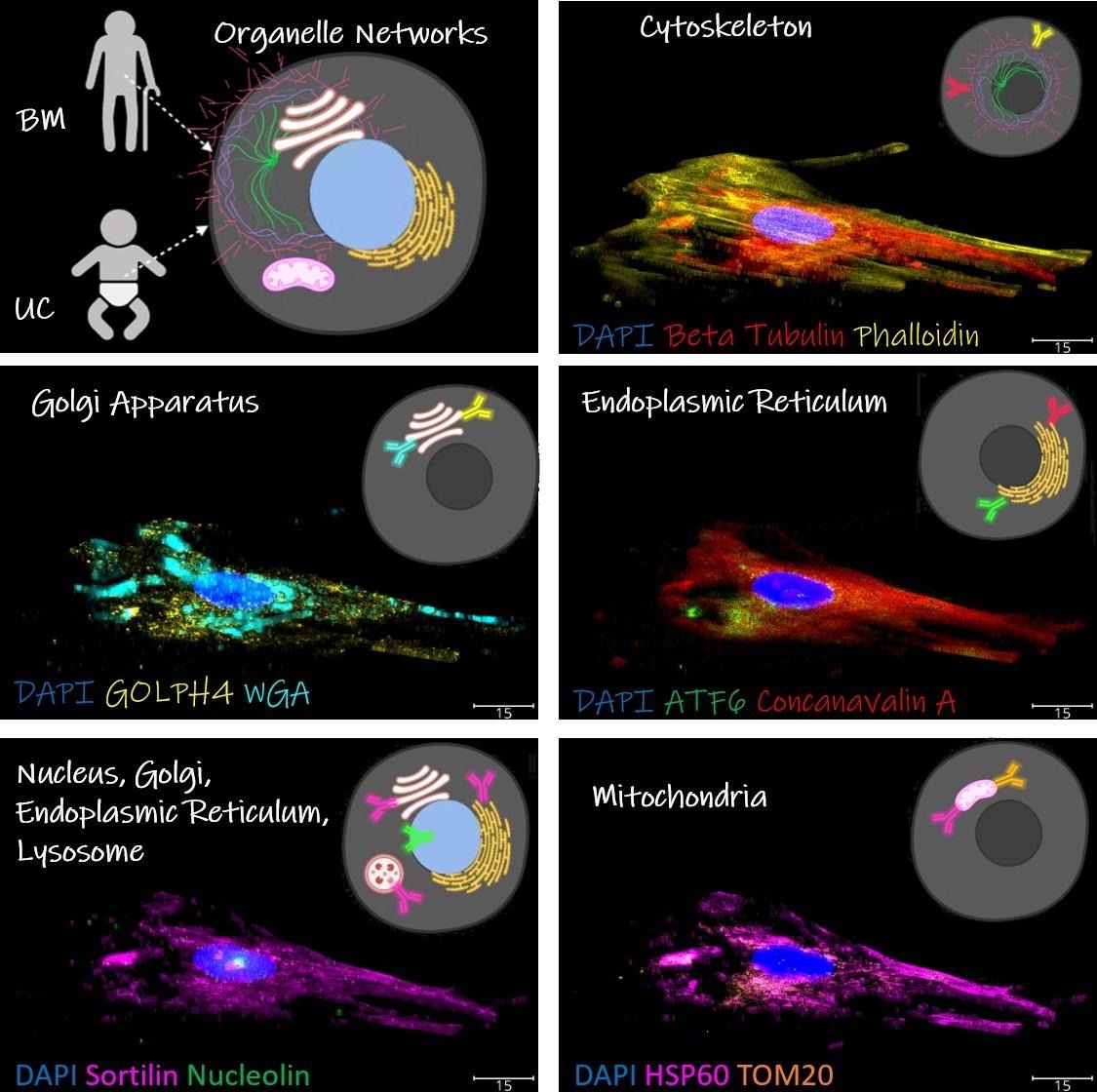Organelles, which are made up of various protein and RNA fragments inside of a cell, are crucial for maintaining homeostasis, controlling aging and development, and producing energy.
 Spatial organelle. Image Credit: Georgia Institute of Technology
Spatial organelle. Image Credit: Georgia Institute of Technology
Cells can differ in their organelles both across and within different cell types. Researchers can develop better therapies to cure a variety of diseases by better understanding cell function via the study of these distinctions.
Researchers looked at a particular type of stem cell with an intracellular toolkit in two papers from the lab of Ahmet F. Coskun, a Bernie Marcus Early Career professor in the Coulter Department of Biomedical Engineering at the Georgia Institute of Technology and Emory University. This was done to identify which cells are most likely to produce successful cell therapies.
We are studying the placement of organelles within cells and how they communicate to help better treat disease. Our recent work proposes the use of an intracellular toolkit to map organelle bio-geography in stem cells that could lead to more precise therapies.”
Ahmet F. Coskun, Bernie Marcus Early Career Professor, Coulter Department of Biomedical Engineering, Georgia Institute of Technology
Creating the Subcellular Omics Toolkit
The first study, which was published in Scientific Reports, a Nature portfolio journal, focused on mesenchymal stem cells (MSCs), which have in the past demonstrated promise as therapeutic agents for treating patients’ immune responses or mending damaged cells.
Through fast subcellular proteomic imaging and a series of tests, the researchers were able to develop a data-driven, single-cell strategy that allowed for customized stem cell treatments.
The researchers then utilized antibodies made to target certain organelles in a quick multiplexed immunofluorescence approach. They created maps by fluorescing antibodies and tracking wavelengths and signals to assemble images of several distinct cells.
The spatial arrangement of organelle interactions and the geographic distribution of related cells were then shown on these maps, allowing researchers to predict which cell types would be most effective at treating particular diseases.
Coskun added, “Usually, the stem cells are used to repair defective cells or treat immune diseases, but our micro-study of these specific cells showed just how different they can be from one another. This proved that patient treatment population and customized isolation of the stem cells identities and their bioenergetic organelle function should be considered when selecting the tissue source. In other words, in treating a specific disease, it might be better to harvest the same type of cell from different locations depending on the patient’s needs.”
RNA-RNA Proximity Matters
The next study, which was published in Cell Reports Methods, expanded on the toolkit by examining the spatial arrangement of several nearby RNA molecules in a single cell, which is crucial to cellular function.
The technique was developed by the researchers by combining spatial transcriptomics and machine learning. They discovered that studying the changes in gene proximity for cell type categorization was more accurate than just studying gene expression.
“The physical interactions between molecules create life; therefore, the physical locations and proximity of these molecules play important roles. We created an intracellular toolkit of subcellular gene neighborhood networks in each cell's different geographical parts to take a closer look at this,” Coskun further stated.
The work included two components: experiments at the lab bench and the creation of computational algorithms. To categorize RNA molecules according to their spatial distribution, the researchers looked at available datasets using an algorithm. The “nearest neighbor” technique assisted in classifying genes.
Then, to make it simple to find RNA molecules in single cells, researchers tagged them with fluorescents on the bench. The distribution of RNA molecules revealed several characteristics, including the likelihood that genes are found in similar subcellular regions.
If there are subtypes of unidentified cells in therapeutic cells, researchers cannot anticipate how these cells will behave when injected into patients. Cell therapy requires a large number of cells with substantially identical characteristics.
More cells of the same kind can be recognized using these techniques, and unique stem cell subsets with unusual gene programs can be extracted.
Coskun concluded, “We are expanding the toolkit for the subcellular spatial organization of molecules— a ‘Swiss Army Knife’ for the subcellular spatial omics field, if you will. The goal is to measure, quantify, and model multiple independent but also interrelated molecular events in each cell with multiple functionalities. The end purpose is to define a cell’s function that can achieve high energy, Lego-like modular gene neighborhood networks and diverse cellular decisions.”
Source:
Journal references:
- Venkatesan, M., et al. (2023). Spatial subcellular organelle networks in single cells. Scientific Reports. doi.org/10.1038/s41598-023-32474-y
- Fang, Z., et al. (2023). Subcellular spatially resolved gene neighborhood networks in single cells. Cell Reports Methods. doi.org/10.1016/j.crmeth.2023.100476